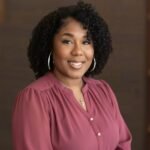Neil Leonard Redefines Sound, Space, and Collaboration in the Global Art Scene

A Visionary Composer and Artist Breaking Boundaries Across Disciplines
Neil Leonard discusses his innovative approach to blending music, technology, and visual art, his global collaborations, and the inspirations behind his groundbreaking installations and performances featured worldwide.
Neil Leonard is a visionary artist whose work transcends boundaries, blending music, technology, and visual art into immersive, transformative experiences. As a composer, saxophonist, and transdisciplinary artist, Neil Leonard has carved a unique path in the global art scene, collaborating with renowned artists and institutions across continents. His ability to seamlessly integrate live electronics, multichannel audio, and traditional music forms has redefined the possibilities of sound and performance, earning him a place among the most innovative artists of our time.
Leonard’s artistic achievements are as diverse as they are impressive. From his sound installations at Mass MoCA and the Havana Bienal to performances at Carnegie Hall and the Venice Biennale, his work resonates with audiences worldwide. His collaborations with luminaries like Tony Oursler and Fujiko Nakaya, as well as his leadership as the founding Artistic Director of the Berklee Interdisciplinary Arts Institute, highlight his commitment to pushing the boundaries of interdisciplinary art. Through his profound understanding of sound and space, Leonard creates works that invite audiences to listen, reflect, and connect on a deeper level.
In this exclusive interview for Mosaic Digest Magazine, Neil Leonard shares insights into his creative process, his global collaborations, and the inspirations behind his groundbreaking projects. From his early explorations in jazz saxophone to his large-scale installations that merge sound, technology, and culture, Leonard offers a glimpse into the mind of an artist who continues to redefine the art of listening.
Your career spans a wide range of disciplines, from music composition to multimedia performance. How do you approach blending these different forms of art in your work?
I’m fascinated by the interplay between visual art, sound, and music. From a young age, I explored painting, drawing, printmaking, and animation. After formal music training in jazz saxophone at the New England Conservatory, I worked at the Massachusetts College of Art, where I began collaborating with visual artists in film, video, performance, and installation. One early interdisciplinary project was creating sound and music for Tony Oursler’s work, featured in the Whitney Biennial.
A recent example of my interdisciplinary approach is Frequências Futurais, developed during a 2023 residency at the Sacatar Institute in Brazil. While on the Island of Itaparica, I immersed myself in the environment—recording local sounds, gathering residents’ spoken histories, and creating daily electronic compositions. The result was a sound, video, and sculptural installation, exhibited at Galleria Solar Ferrão in Salvador de Bahia, and later presented at IRCAM in Paris and Experimental Loop in NYC in 2024.
Having collaborated with artists across the globe, including in places like Cuba, Israel, and Japan, how have these international experiences influenced your creative process?
Collaborating with artists across the globe has shown me how essential it is to pay attention to the voices of my collaborators and their communities to enrich our work together. My experience with Cuban artists, in particular, has highlighted how listening can build trust across cultural differences.
Lately, I’ve been reflecting on the importance of collaborative listening. I’ve applied this approach in Matanzas Sound Map, which will be exhibited at Tate Modern in 2025. This installation invites the audience to embark on a listening journey that began in Cuba, where I collaborated with musicians, biologists, street criers, and others to explore how people uniquely hear their surroundings. From folkloric music to the sounds of dawn in the Ciénaga de Zapata biosphere, the project captures the rich sonic landscape of the Matanzas province. The piece was created in collaboration with artist Maria Magdalena Campos-Pons.
Many of your performances incorporate live electronics and multichannel audio. What drives your interest in integrating technology with traditional music forms?
I am always curious about exploring new artistic possibilities. Each era has its own technological innovations. Centuries ago the concept of the musical scale was a new technology. The saxophone itself has only been popular for the past one hundred years. The synthesizer became widely used in my lifetime. In the 1980s I began creating software that responded to my performance. My album Timeaus (2001) features original compositions for saxophone and software in which I used musical prompts for machine generated response in realtime. This work predates the widespread use of AI by thirty years.
You’ve worked with notable artists like Tony Oursler and Fujiko Nakaya, and showcased your installations at prestigious venues like MoMA and Tate Modern. Can you share what goes into creating large-scale interdisciplinary collaborations?
Large-scale interdisciplinary collaborations begin with active listening—listening to collaborators to understand their vision, to the unique acoustic elements of the space, and to develop a shared aesthetic. This practice has shaped my creative process across international projects. One notable example is my collaboration with Fujiko Nakaya. After attending my concert Sounding the Cloud at the Institute of Contemporary Art in Boston, she invited me to compose for her installation Fog x Ruins in Franklin Park. The installation—a 30 x 12-meter structure with 900 mist nozzles—was set in a historic stone ruin where Duke Ellington once held free concerts. My composition blended with Fujiko’s fog, inviting the audience into a space where they could notice the subtle shifts in wind, light, and mist. Fujiko later told me, “It was with your music that I discovered sound gave form to fog or a/form to no/form.”
As the founding Artistic Director of the Berklee Interdisciplinary Arts Institute, how do you foster an environment that encourages students to explore cross-disciplinary art forms?
My goal is to teach students the practice of collaborating with artists from diverse disciplines. I encourage them to explore their own art while connecting with different cultures. I invite practicing artists and curators working in interdisciplinary spaces to share their work and critique students’ projects. We also collaborate with schools like Harvard, MIT, and the Shanghai Theater Academy.
Your compositions and installations have been featured in iconic spaces like Carnegie Hall and the Venice Biennale. How do you tailor your work for such diverse venues and audiences?
The site of a piece shapes its unique listening context. At the Venice Biennale, I drew on the spatial experiments of composers like Giovanni Gabrieli at San Marco, positioning 18 loudspeakers in the National Museum of Archaeology for an antiphonal experience, where street vendor voices, electronic sounds, and conversations surrounded visitors, blending with the bells of the Campanile.
In contrast, when composing Totems for Don Byron at Carnegie Hall, I left space for the audience to appreciate the hall’s acoustics. Each work is crafted for its venue, and its context doesn’t transfer easily to other spaces.












